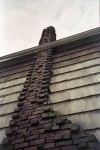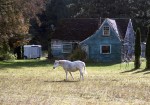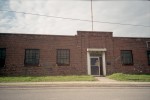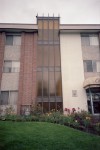Apr
17
2016

The Ricoh R1 is much like two cameras in one as I’ve stated previously. The 30mm lens is a fantastic performer and the 24mm panoramic has a toy camera aesthetic. The decision to use Adox color implosion film is more in keeping with the latter but I like the unmistakable ‘filmness’ either way. The gallery that follows is a little of each and for the moment it ‘s the 24mm panoramic film camera I use as my Minolta Freedom Vista was stolen from my vehicle. I suppose the joke is somewhat on them as there isn’t a big market for film cameras let alone ones that only take panoramic shots. It’s more likely to end up in a dumpster than to take another picture but I hope it does get used even if it isn’t by me. In the meantime the R1 is one of the best point and shoots I have so I turn to it often.
1 comment | tags: adox, color implosion, film, panoramic, Ricoh | posted in Cameras, Photography
Sep
22
2015

The first order of business is to correct the marketing hype on the front of the camera as I’ve stated before in this post Ricoh FF9SD the camera is not see through as much as see into and panoramic isn’t anything more that setting the focus to infinity and suppressing the flash. What it should say on the front is that it is a good camera for taking double exposures, you just need to press the mode button until the top LCD shows M.E. (Multiple Exposure). After you take the first image the film doesn’t advance automatically until the second image is taken it doesn’t get much easier. There are a few other features of this camera such as an interval mode but a real missed opportunity is that despite having a cable release port it doesn’t have a bulb mode, too bad. The images that it produces are respectable though with well controlled aberrations through its 35mm f3.5 4 element lens. It certainly stands out as different with it’s clear plastic shell.

no comments | tags: film, Ricoh | posted in Cameras, Photography
Mar
27
2015

Also know as the Ricoh Shotmaster 130 Super
I’ve written about this camera previously but there are a few unique details that I haven’t mentioned.
The auto backlight control is coupled to the focus system, if a backlit subject is greater than 20 feet away it will adjust the exposure alone but if the subject is closer it will use fill flash, nice and automatic.
In Super Night Shot mode if you are taking a portrait the camera will first focus to infinity and take an exposure for up to 2 seconds it then closes the shutter refocuses on the subject and takes a second exposure with flash, if there is no subject within 6m then the camera just takes the long exposure without the second flash image.
The RZ3000 can adjust exposure for light levels in the range of 3.5EV to 17EV. (EV 3.5 with ISO 400 film would be something like candle light or a night scene with lights)
Originally listed at around $300 in 1996 the RZ3000 can now be had for less than the cost of a roll of film, although this fate is not unique to it. If it wasn’t for the complete depreciation of these cameras I couldn’t hope to have this much fun.
no comments | tags: film camera, Ricoh | posted in Cameras, Photography
Sep
10
2014


I didn’t end up finishing the roll of film in my Ricoh R1 so it did go through the security check at the airport and seems to have survived none the worse for all the radiation. As I’ve said before the Ricoh R1 has an incredibly sharp lens particularly in the center when set to 30mm not the 24mm wide angle seen in the picture above. It’s also small and pocketable. As it is one of the direct forerunners of the latest Ricoh GR digital camera its making me take a serious look at that camera too. We have reached a point in digital photography where there are many great cameras to choose from with each one having certain advantages that set them apart but they are for the most part all yielding quality images. So what would be the reason to use the R1 with film over buying a Ricoh GR? Well at around $800 for the GR that works out to around 80 rolls of film developed or 2880 frames so clearly in the long run digital would be an advantage but I’m not really likely to want to use this camera exclusively and 2880 frames might take me 5 years to shoot in that manner. You can see my dilemma, wanting something and needing it are two different things entirely.
no comments | tags: film, Photography, Ricoh | posted in Cameras, Photography, Uncategorized
May
7
2014

Here are some more images from the fantastic little Ricoh R1 camera using 100 ISO Kodak Ektar. A follow up to Ricoh R1
2 comments | tags: film, Photography, Ricoh | posted in Cameras, Photography
Apr
16
2014

The Ricoh R1 is like two cameras in one. A high quality 30mm point and shoot and a 24mm panoramic riot of distortion. For my purposes I think I will stick to 30mm. That is the cameras native focal length and it’s only by swinging extra lens elements into the optical path that the 24mm is created. Some people disable the panoramic masking at 24mm to allow the full 35mm frame to be exposed but the result is a mix of the distortion I mentioned and severe vignetting.
While not as small as the Olympus Stylus Epic it has superior ergonomics and controls and still fits in a pocket easily. As for 30mm as a focal length it is a bit wide but not as much as 28mm. I tend to prefer 35mm but this is a decent compromise.
It really is a testament to the design of this camera that 20 years later Ricoh is still making digital cameras that take their design cues from the R1. Additionally the iconic GR series of film cameras were an improvement on the R1 while retaining similar ergonomics.
In this 100% crop you can see really see the quality of the 30mm f3.5 optics at the center. It’s not as good in the corners but is still respectable.

And now for the pictures.
3 comments | tags: camera, film, Photography, Ricoh | posted in Cameras, Photography
Sep
22
2013

Like grampa’s plaid shirt the Ricoh 35 just keeps working. This camera wouldn’t win any beauty contests but those weird appendages on the lens are there to keep it held firm as you focus, not to be attractive. That attitude extends to the rest of the camera too, if it doesn’t serve a purpose it just isn’t there. The shutter is somewhat limiting topping out at 1/200 second and only having four other speeds but since its completely manual you can usually get an exposure that works.
no comments | tags: 35mm, Ricoh | posted in Cameras, Photography
Aug
17
2013

If it’s that 1980’s vibe your after this camera will match your feathered hair nicely just don’t get it caught between the sides of your water-bed. The Ricoh 35 EFS is very simple to operate. All exposure is automatic, the flash is turned on by you and you focus be selecting a little icon on the lens barrel. I mean how well do you want the camera focused on that mix tape in your hand anyway. So yes it’s built to look like a rangefinder of the 1970’s but it’s all plastic like the 80’s and is on the large side just like your shoulder pads. The lens is a 40mm f2.8 with 3 groups and 4 elements. Seriously though this is like totally the camera I would take in a Delorean at 88 miles an hour.
6 comments | tags: film, Photography, Ricoh | posted in Cameras, Photography
Jul
16
2013

My initial try with this camera was marred by the horrible out of date Polaroid brand film I used with it. If it hadn’t otherwise been such a good performing camera I would have just left it at that but it seemed to deserve another roll.
And how do I feel now? Well it’s a good camera with great ergonomics as I outlined in my first post Ricoh RZ3000 , but as for results it doesn’t produce anything that necessarily stands out. I could go back to bad film, that stands out but otherwise it doesn’t really give me a look that says this is why I still shoot film.
When I choose to use film one of the reasons is the overall experience of the camera, such as using a Twin Lens or a rangefinder but with the RZ3000 it’s almost too much like just using a digital camera. So as good as it is it will go back into a small box with similar cameras until I forget what I just wrote and take it out again.
2 comments | tags: camera, film, Photography, Ricoh | posted in Cameras, Photography
Jul
15
2012
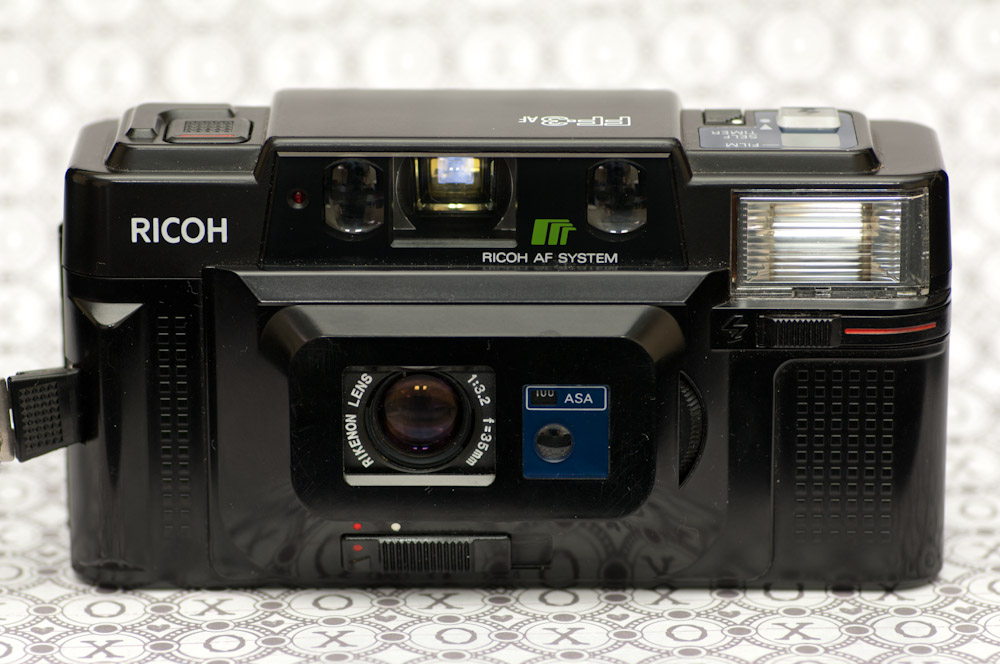
If the 1970’s were all about fixed lens rangefinders then the early 1980s were all about the 35mm auto-focus point and shoot. When I say 35mm I don’t just mean the film size either it was such a common focal length that it seems every camera maker of the day had one. So please forgive me for finding the Ricoh FF-3 to be just another of the many, such as the Yashica T series or the Nikon L35AF, Pentax PC35AF, Canon AF35M, it seems it was best to make sure that people could tell from the name that it was a 35mm lens and had that new fanged auto-focus thing. If anything the Ricoh is physically slightly wider than some of the other equivalent cameras of the day, but that’s not much of a difference.
4 comments | tags: camera, film, Ricoh | posted in Photography


































